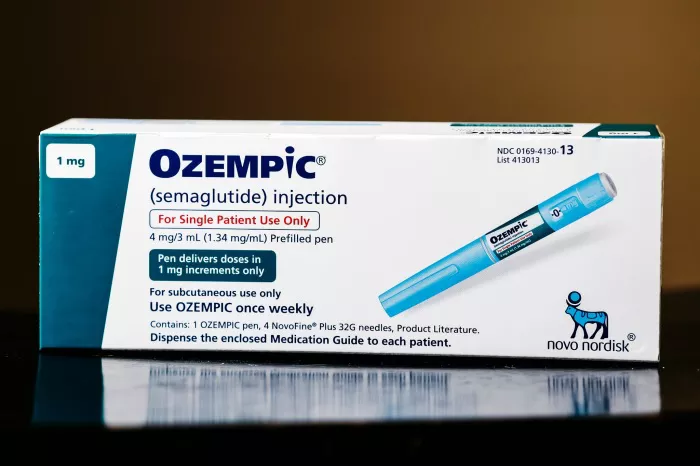Allergy shots, also known as immunotherapy, are a common treatment for allergies. The shots contain a small amount of the allergen that a person is allergic to, and over time, the body builds up a tolerance to the allergen. While allergy shots are generally safe and effective when administered correctly, there are some potential risks if the shot is given in the muscle instead of under the skin. In this article, we will explore what happens if you give an allergy shot in the muscle and how to prevent this from happening.
What Are Allergy Shots?
Allergy shots are a type of immunotherapy that involves injecting small amounts of an allergen into the body over a period of time. The goal of the treatment is to help the body build up a tolerance to the allergen and reduce or eliminate the symptoms of allergies. Allergy shots are typically administered in the upper arm, just under the skin.
What Happens If You Give an Allergy Shot in the Muscle?
If an allergy shot is given in the muscle instead of under the skin, it can lead to a few potential complications. Here are some of the possible outcomes if you give an allergy shot in the muscle:
Delayed Absorption – If the shot is given in the muscle, it may be absorbed more slowly than if it were given under the skin. This can lead to a delayed onset of the therapeutic effects of the shot.
Increased Risk of Side Effects – If the shot is given in the muscle, it may be more likely to cause side effects, such as redness, swelling, or itching at the injection site.
Anaphylaxis – In rare cases, giving an allergy shot in the muscle can lead to anaphylaxis, a severe and potentially life-threatening allergic reaction. This is more likely to occur if the person receiving the shot has a history of severe allergies or has previously experienced anaphylaxis.
Why Is It Important to Give Allergy Shots Under the Skin?
Allergy shots are designed to be given under the skin, also known as subcutaneously. This is because the skin contains a high concentration of immune cells, which are responsible for recognizing and responding to allergens. When the allergen is injected under the skin, it is taken up by these immune cells and processed in a way that helps the body build up a tolerance to the allergen.
If an allergy shot is given in the muscle, it may not be taken up by the immune cells in the skin, which can lead to a delayed or reduced therapeutic effect. Additionally, the muscle tissue is less equipped to handle allergens, which can increase the risk of side effects and potentially lead to anaphylaxis.
How to Prevent Giving an Allergy Shot in the Muscle
To prevent giving an allergy shot in the muscle, it is important to follow proper injection techniques. Here are some tips to help ensure that the shot is given correctly:
Choose the Right Needle – Use a short, thin needle for the injection. This will help ensure that the shot is administered just under the skin and not in the muscle.
Pinch the Skin – Before administering the shot, pinch the skin to create a small fold. This will help ensure that the shot is given just under the skin and not in the muscle.
Inject at the Right Angle – Hold the needle at a 90-degree angle to the skin and insert it just under the surface of the skin. This will help ensure that the shot is given just under the skin and not in the muscle.
Check the Injection Site – After administering the shot, check the injection site to make sure that it is not in the muscle. The skin should be slightly raised and there should be no signs of bleeding or swelling.
Follow Up – It is important to follow up with the person receiving the shot to monitor for any side effects or complications. If there are any concerns, seek medical attention immediately.
What Are the Risks of Giving an Allergy Shot in the Muscle?
While giving an allergy shot in the muscle is generally not recommended, it may sometimes occur due to human error or other factors. Here are some of the potential risks of giving an allergy shot in the muscle:
Delayed Absorption – If the shot is given in the muscle, it may be absorbed more slowly than if it were given under the skin. This can lead to a delayed onset of the therapeutic effects of the shot.
Increased Risk of Side Effects – If the shot is given in the muscle, it may be more likely to cause side effects, such as redness, swelling, or itching at the injection site.
Anaphylaxis – In rare cases, giving an allergy shot in the muscle can lead to anaphylaxis, a severe and potentially life-threatening allergic reaction. This is more likely to occur if the person receiving the shot has a history of severe allergies or has previously experienced anaphylaxis.
Localized Muscle Damage – Injecting the allergen into the muscle can cause localized damage to the muscle tissue. This can lead to pain, swelling, and other symptoms.
Systemic Effects – Injecting the allergen into the muscle can also lead to systemic effects, such as fever, chills, and fatigue. These symptoms may be more severe than if the shot were given under the skin.
What Are the Symptoms of Anaphylaxis?
Anaphylaxis is a severe and potentially life-threatening allergic reaction that can occur if an allergy shot is given in the muscle. Here are some of the symptoms of anaphylaxis:
Difficulty Breathing – Anaphylaxis can cause swelling and tightening of the airways, making it difficult to breathe.
Rapid Heartbeat – Anaphylaxis can cause the heart to beat rapidly or irregularly.
Low Blood Pressure – Anaphylaxis can cause a sudden drop in blood pressure, which can lead to dizziness or fainting.
Skin Rash – Anaphylaxis can cause a widespread skin rash or hives.
Nausea and Vomiting – Anaphylaxis can cause nausea and vomiting, which can lead to dehydration.
If you or someone you know is experiencing symptoms of anaphylaxis, seek medical attention immediately.
Conclusion
In conclusion, giving an allergy shot in the muscle can lead to delayed absorption, an increased risk of side effects, and in rare cases, anaphylaxis. To prevent this from happening, it is important to follow proper injection techniques, including choosing the right needle, pinching the skin, injecting at the right angle, checking the injection site, and following up with the person receiving the shot. If you have any concerns about administering allergy shots, consult with a healthcare professional who can provide guidance and support. With the right care and attention, allergy shots can be a safe and effective treatment for allergies.
[inline_related_posts title=”You Might Be Interested In” title_align=”left” style=”list” number=”6″ align=”none” ids=”5236,5233,5172″ by=”categories” orderby=”rand” order=”DESC” hide_thumb=”no” thumb_right=”no” views=”no” date=”yes” grid_columns=”2″ post_type=”” tax=””]
































